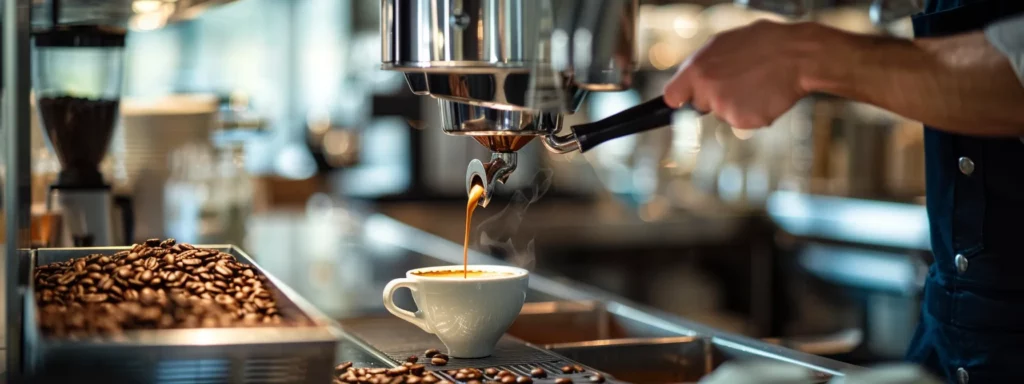
How Much Caffeine Content Is in Your Cup of Coffee?
Ever wondered if your coffee gives you that perfect boost or too much caffeine content? This blog post breaks down caffeine by brewing method and serving size, plus it explains the role of additives. Readers will learn how to balance their daily caffeine intake and make choices that suit their taste and health.
Essential Key Takeaways for Understanding Our Brand's Offerings
- brewed, espresso, instant, and decaf coffee each have unique caffeine levels
- espresso gives a concentrated boost while regular coffee offers steady energy
- brewing techniques and bean varieties affect caffeine extraction and flavor profiles
- additives like milk and sugar alter the coffee’s stimulant effect and taste
- tracking daily caffeine intake helps maintain a balanced routine
How Much Caffeine Content Is in Your Cup of Coffee?
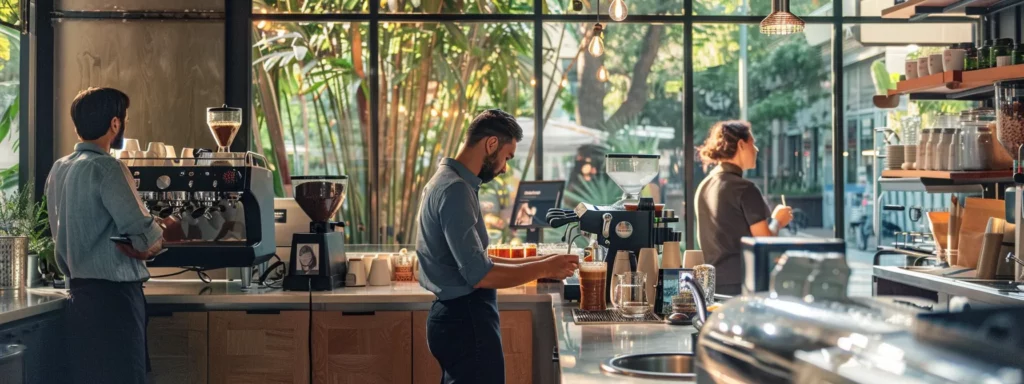
This section breaks down caffeine levels in brewed coffee, how espresso shots yield a potent ristretto burst, and what instant coffee delivers. It also outlines decaf coffee caffeine presence. Readers learn how water extraction affects the stimulant and why too much can set off both headache and palpitations, ensuring a clear understanding of each coffee type’s impact.
Caffeine Levels in Brewed Coffee
Brewed coffee typically holds a moderate dose of caffeine that suits most people’s daily diet, and its flavor balance often outshines herbal tea or standard tea types. This consistency is key to advertising efforts and measuring performance through tools like google analytics in determining customer preferences:
- Moderate caffeine levels in brewed coffee
- Comparison with tea and herbal tea
- Impact on daily diet and lifestyle
Customers often enjoy the brewed variant for its familiar taste and reliable energy boost, aligning with personal routines and nutritional habits. Coffee connoisseurs note that understanding these caffeine levels helps avoid headaches and palpitations while offering a balanced experience that suits both work breaks and leisure time.
Caffeine Content in Espresso Shots
The espresso shot stands out with concentrated caffeine that gives a quick kick comparable to an energy drink, according to solid information shared by coffee experts. This concentrated form results from precise coffee roasting techniques and is preferred by those who might switch from drip coffee to a latte for a stronger pick-me-up:
- High concentration in a small volume
- Optimal extraction process
- Balance between flavor and caffeine
Expert insights show that espresso’s intense composition makes it ideal for users seeking a swift burst of energy without switching to an energy drink, and such insights complement broader discussions on coffee roasting and beverage preferences. Consumers appreciate this detailed information, as it helps them decide between options like drip coffee or a latte for their daily routine.
Comparing Caffeine in Instant Coffee
Instant coffee generally delivers a moderate concentration of caffeine that differs from espresso-based alternatives such as the Nespresso option, enabling users to control their caffeine boost without significantly affecting their daily routine. This variety suits those who are cautious about excess consumption that might contribute to health issues, even though there’s no direct link to any disease when enjoyed in moderation.
The contented routine of mixing milk with instant coffee provides a smoother flavor profile, which many find appealing. Experts note how the straightforward preparation method enables coffee lovers to balance their intake effectively while enjoying a reliable cup without an overly strong dose.
Understanding Decaf Coffee Caffeine
Decaf coffee offers a subtle boost in alertness without the high caffeine punch found in regular brews, and many find its taste pleasantly mild when paired with a dash of sugar. Experts note that using a moka pot to brew decaf can help maintain a robust flavor profile while keeping the carbon footprint low, ensuring a satisfying cup that minimizes overstimulation.
Consumers seeking a balanced experience often choose decaf to avoid the jittery sensation that standard brews sometimes cause, while still enjoying a rich cup of coffee. The moka pot method, combined with a hint of sugar, enhances the taste and provides smooth alertness, allowing coffee enthusiasts to savor their drink without excess caffeine.
The caffeine count tells only part of the story. The way coffee is brewed can change that number, and that’s where the next chapter begins.
How Caffeine Content Differs by Brewing Method
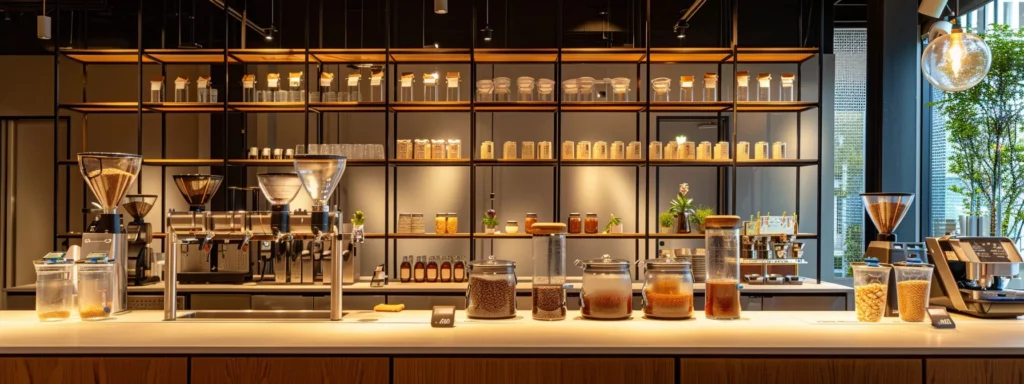
Drip coffee and French Press offer distinct brew styles that influence how many milligrams caffeine in coffee. Cold brew provides steady energy, while bean varieties subtly affect flavor and weight loss benefits. Data from a trusted barista show that each method impacts caffeine extraction, setting the stage for a deeper look at these differences and their practical results.
Drip Coffee vs. French Press
Drip coffee, prepared with boiling water, creates a reliable caffeinated drink that reveals subtle chocolate undertones, while the French Press method yields a deeper infusion reminiscent of a robust green tea blend, catering to different tastes and routines:
- Drip coffee offers a lighter body and neat finish
- French Press brings out bolder flavors and richer texture
- Some enjoy their coffee with ice for a cool twist on a classic caffeinated drink
Both techniques provide practical options for coffee drinkers who appreciate a distinct flavor profile in each sip, ensuring a satisfying cup with every brew and a balance that can suit any moment of the day.
Cold Brew and Its Caffeine Concentration
Cold brew typically delivers a smoother caffeine concentration compared to instant coffee, offering a refreshing drink that many appreciate even when managing type 2 diabetes risks. Its extraction process, which involves gentle water infusion instead of intense boiling, allows for a balanced extraction of caffeine from each coffee bean and careful roasting results in a tailored taste:
| Brewing Method | Extraction Style | Caffeine Result |
|---|---|---|
| Cold Brew | Slow Water Infusion | Steady, Balanced |
| Instant Coffee | Quick Dissolving | Moderate, Less Complex |
This approach reassures coffee enthusiasts looking for a consistent caffeine boost while enjoying their favorite drink, and it proves useful in balancing the health concerns tied to type 2 diabetes with a favorable flavor profile derived from careful roasting and selecting optimal coffee beans.
The Impact of Coffee Bean Varieties on Caffeine
The impact of coffee bean varieties on caffeine shows how different beans influence extraction efficiency and adenosine interaction, affecting overall nutrition similar to what consumers notice with black tea prepared on an espresso machine or cold brew coffee:
| Brewing Method | Bean Variety Influence | Caffeine Result |
|---|---|---|
| Espresso Machine | High extraction with robust beans | Concentrated caffeine burst |
| Cold Brew Coffee | Smooth extraction from milder beans | Steady, balanced caffeine |
Experts find that selecting specific bean types can fine-tune caffeine levels to suit everyday needs, whether using an espresso machine or opting for cold brew coffee, ensuring consumers enjoy balanced caffeine levels without overstimulation or adenosine disruption.
Caffeine amounts shift with each brew, but the cup’s size matters just as much. Next, the focus shifts to how each serving plays its own role in your caffeine intake.
How Serving Size Affects Caffeine Consumption
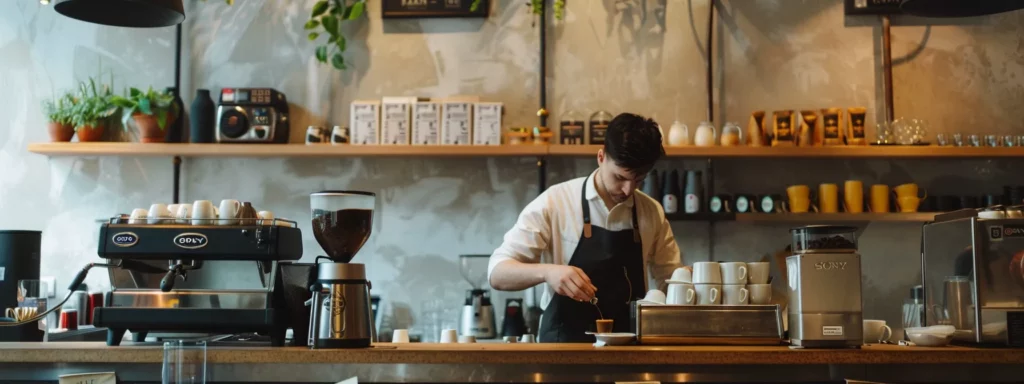
The section breaks down how standard cup sizes, such as a cappuccino, compare by bean weight to deliver different caffeine ratios. It also covers methods for measuring caffeine in specialty coffee drinks and the effects of larger portions on blood pressure control. These insights guide readers in making informed choices for a balanced caffeine intake.
Standard Cup Sizes and Their Caffeine Amounts
The coffee connoisseur notes that standard cup sizes significantly impact caffeine levels, with everyday servings guided by food and drug administration recommendations to support overall health. Proper coffee preparation methods can alter the brain’s response, ensuring that each serving provides a balanced energy boost without overdoing the stimulant effects.
Experts share that even slight variations in decaffeination techniques can affect the amount of caffeine in a cup, making careful attention to serving size a key part of enjoying one’s brew. This focus on serving portions helps maintain a steady flow of caffeine, allowing the brain to benefit from its gentle uplift while keeping health in check.
Measuring Caffeine in Specialty Coffee Drinks
Coffee experts point out that measuring caffeine in specialty coffee drinks involves more than just portion size; it also factors in ingredients like matcha, which can influence the overall stimulant effect. Understanding these measurements becomes important for people managing pregnancy guidelines, blood sugar level, and heart rate, as each component may change the influence of coffea-based brews:
| Beverage Type | Caffeine Source | Measurement Insight |
|---|---|---|
| Specialty Latte | Coffea Blend | Standard serving provides a balanced caffeine boost |
| Matcha Infusion | Green Tea Powder & Coffea | Combined effect requires careful monitoring |
Industry professionals stress that accurate measurement helps consumers tailor their drink choices, especially when balancing factors like heart rate control and blood sugar level management. They recommend regular checks and adjustments for those experiencing sensitive reactions during pregnancy or while switching between coffee and matcha blends.
Effects of Larger Portions on Caffeine Intake
Coffee experts note that larger portions in a mug can mean a higher caffeine intake, which may affect the balance of nutrients similar to how a fresh fruit offers essential vitamins from a plant. They suggest starting with an ounce-based serving to monitor the body’s response, as too many ounces may overwhelm the natural nutrient flow in the system.
Specialists mention that a larger serving can alter the familiar experience of a well-balanced brew, drawing a parallel to how a fruit provides both taste and nutrients from the plant. They advise that consumers enjoy their coffee in a standard mug to keep caffeine levels consistent, ensuring a steady intake that maintains energy without overloading the system.
Serving size shapes our daily buzz, but there is more at play. Next up, coffee additives step in to alter every sip.
The Role of Additives in Coffee's Caffeine Levels
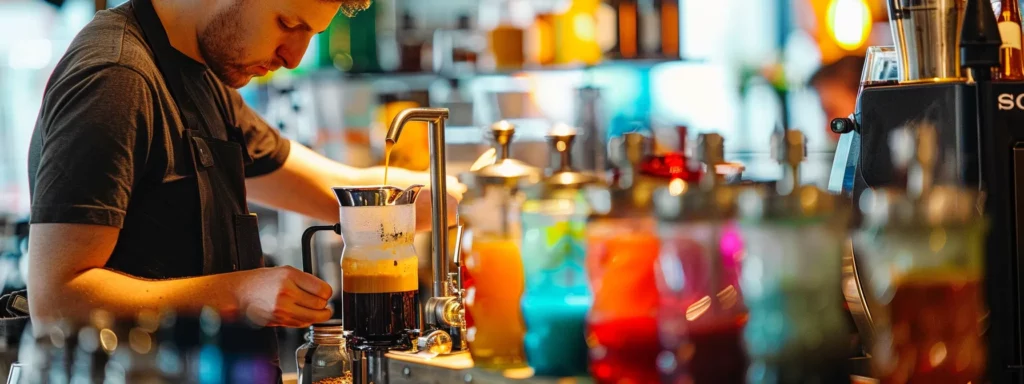
This section examines how additives affect caffeine in coffee, discussing milk and sugar’s impact, alternative milk choices, and flavored coffees. Experts highlight differences seen in a french press brew versus a cola-based beverage. They also note how additives may influence metabolism, blood response, and even carbon dioxide release during brewing.
Milk and Sugar's Impact on Caffeine Content
Coffee experts note that milk and sugar can alter how caffeine interacts with the body. This adjustment in composition sometimes changes pressure on the system, making it important to monitor your intake, especially when using brewing methods like the aeropress:
| Additive | Impact on Caffeine | Expert Note |
|---|---|---|
| Milk | Dilutes the stimulant effect | Can lower pressure on the system |
| Sugar | May mask the intensity | Be cautious of increased risk in sensitive individuals |
Industry specialists explain that while these additives modify flavor and texture, they also influence the body’s response to caffeine. Practical insights from everyday brewing experiences, including those using an aeropress, suggest that a balanced approach helps manage risk and delivers a more consistent energy boost without stressing the system.
Alternative Milk Options and Caffeine
Alternative milk options such as almond, oat, or soy can subtly change the coffee’s caffeine experience. These beverages mix well with coffee and have the potential to mellow the stimulant’s impact without taking away the natural coffee flavor.
Experts note that choosing these milk substitutes may provide a different textural feel, making the coffee more enjoyable for those who are careful with their caffeine limit. The choice of milk can enhance the overall taste and assist enthusiasts in maintaining a balanced caffeine intake.
Flavored Coffees and Their Caffeine Concentration
Coffee experts note that flavored coffees can slightly modify the caffeine profile, as natural additives and flavoring agents can change how the stimulant is released. Emphasis is placed on understanding that while extra flavors aim to boost the taste, they may also create subtle differences in caffeine delivery, ensuring each cup provides a reliable boost tailored to daily routines.
Industry specialists suggest that consumers enjoy flavored coffee with the same thoughtful approach as other brews, paying attention to how taste agents influence the overall caffeine effect. Clear insights from routine testing help users choose options that strike a balance between flavor and functionality, supporting a mindful approach to enjoying every sip.
The additives show how each brew builds its character. Now, common myths about caffeine step up to the spotlight, ready to challenge our beliefs.
Addressing Common Myths About Caffeine in Coffee
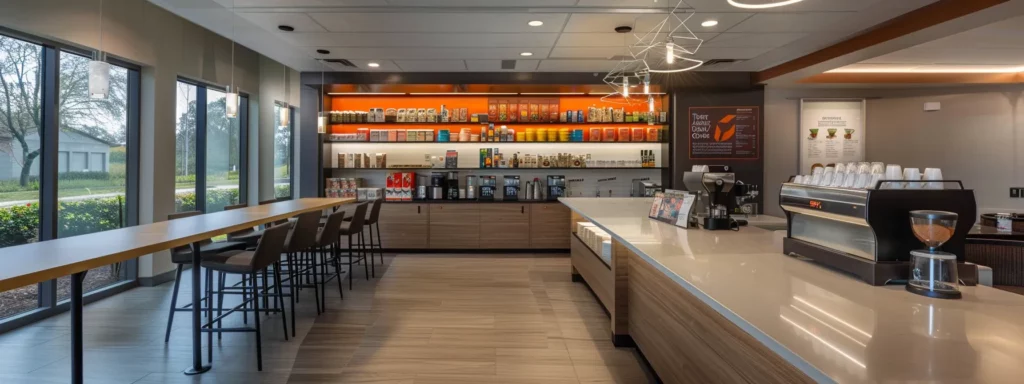
This section examines popular myths, starting with whether dark roast packs a higher caffeine punch, comparing coffee’s kick to energy drinks, and setting the record straight on decaf’s caffeine content. Readers receive practical insights and expert observations, ensuring they get clear, straightforward answers to common questions about caffeine in coffee.
Does Dark Roast Have More Caffeine?
Dark roast coffee does not pack more caffeine than its lighter counterparts; the roasting process mainly alters the flavor profile rather than the stimulant content. Experts note that factors such as bean type and serving size influence caffeine levels more significantly than the roast intensity.
Many coffee aficionados observe that, while dark roast offers a richer taste, its caffeine content remains comparable with lighter roasts. Practical insights from experienced baristas indicate that focusing on flavor preferences rather than caffeine boost can lead to a more satisfying coffee experience.
Is Caffeine in Coffee the Same as in Energy Drinks?
Coffee offers a naturally sourced caffeine kick that works differently from the synthetic stimulation offered by energy drinks. Detailed testing shows that the extraction methods used in coffee brewing influence the release of caffeine, making its effect distinct from energy drinks, which often include additives and sugar for a stronger jolt:
| Beverage | Caffeine Source | Common Additives |
|---|---|---|
| Coffee | Natural coffee beans | None or milk and sugar |
| Energy Drink | Synthetic and natural caffeine | Sugars, taurine, and vitamins |
Experts advise that coffee provides a smoother stimulant effect compared to energy drinks, which may lead to abrupt energy spikes. Understanding the difference in caffeine content and how each beverage affects the body helps consumers make better choices for a steady energy boost that fits their daily routines.
Misconceptions About Decaf Coffee Caffeine
Coffee experts clarify that decaf coffee retains a small amount of caffeine, which is significantly lower than regular brews; this fact often surprises those who assume a caffeine-free drink. Understanding decaf’s extraction process and bean treatment helps consumers make informed choices about their daily stimulant intake:
| Beverage Type | Caffeine Level |
|---|---|
| Regular Coffee | High |
| Decaf Coffee | Low |
Industry professionals suggest that while decaf coffee offers a gentler energy boost, it still contributes to hydration and enjoyment without the full effect of regular caffeine doses. This insight assists readers in balancing their energy needs with a lean towards milder stimulation options.
Clearing up myths about caffeine opens the door to a more realistic view of our daily habits. The next section shows how keeping track of every cup can guide smarter choices.
Monitoring Total Daily Caffeine Intake

Coffee experts outline recommended caffeine limits for adults while advocating tracking caffeine from various sources. They share practical strategies for managing daily consumption to help coffee fans find balance. This section sets the stage for detailed insights into daily limits, monitoring intake, and hands-on approaches for a steady caffeine routine.
Recommended Caffeine Limits for Adults
Coffee enthusiasts understand that keeping track of caffeine intake is key to enjoying a balanced lifestyle. Experts recommend that most adults keep their daily caffeine below 400 milligrams, which typically supports steady energy without overloading the system.
Industry specialists suggest measuring caffeine from all sources to keep consumption in check. They offer practical advice for coffee drinkers to track their intake throughout the day, ensuring each cup contributes to a healthy routine.
Tracking Caffeine From Various Sources
Coffee enthusiasts monitor their daily caffeine intake by keeping track of all beverages consumed, from freshly brewed coffee to tea and energy drinks. Experts recommend using simple tracking methods such as journals or mobile apps to maintain a clear record of how much caffeine is ingested each day:
| Beverage | Caffeine Content | Tracking Method |
|---|---|---|
| Brewed Coffee | Moderate | Manual logging |
| Espresso | High | App-based tracking |
| Tea | Low to moderate | Simple note |
This approach allows coffee aficionados to manage their caffeine variations from diverse sources effectively. By tracking each drink, they can adjust their consumption to match personal routines, ensuring guided insights that contribute to a balanced daily energy boost.
Strategies for Managing Your Caffeine Consumption
Experts suggest monitoring caffeine consumption by setting daily targets and using a basic log to record each cup’s approximate caffeine content. This approach helps coffee enthusiasts adjust their intake and maintain a balanced routine without unexpected jitters or energy crashes.
Specialists recommend checking caffeine levels from any beverage consumed and planning breaks between drinks to avoid overstimulation. Applying simple tracking tips makes it easier for consumers to tailor their choices and enjoy a steady, reliable boost throughout the day.
Conclusion
Understanding the caffeine levels in different coffee types empowers consumers to choose a brew that fits their energy needs. The breakdown of brewed coffee, espresso, instant, and decaf provides practical insights into how brewing methods impact stimulant extraction. Recognizing variations in serving sizes and additives further enhances a balanced approach to daily consumption. These insights enable coffee lovers to manage intake effectively while enjoying a satisfying cup every time.
